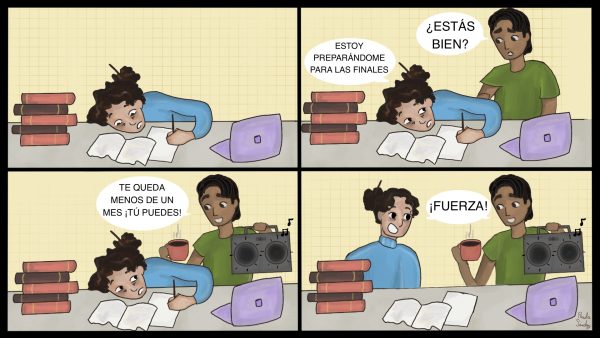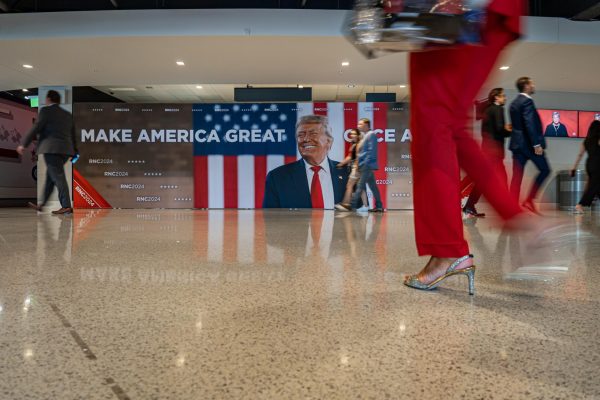Re-inventing instant film
September 27, 2009
A girl wearing a sheepish grin and Chuck Taylors stands near urban train tracks littered with empty bottle cans and tall weeds. With one simple shutter click, she’s made to look vintage, inspired and emotional—perhaps in a special way that might not exist in real life. The nature of the warm-colored, self-developed photo says it all. It’s as if she lives in the past and the image is timeless all at once.
The instant Polaroid camera, first conceived in 1937 by Edwin H. Land, may seem antiquated and irrelevant to most, but the team of passionate chemists and engineers who make up The Impossible Project certainly beg to differ. And who better to show support for the revival of instant film than Urban Outfitters—a store profiting from an entire cultural movement devoted to bringing back kitsch, ’80s fashion and an otherwise nerdy fascination with nostalgic art.
In the age of Photoshop and digital manipulation, the remarkable tonal range, matte finish and iconic white border don’t exactly stand a chance against the sterile digital image in terms of daily use. In fact, chemical photo sales have dropped nearly 25 percent in the past decade, according to the Associated Press.
In February 2008, Polaroid shut down its factories and laid off 450 workers in Enschede, Netherlands and Mexico, which once produced integral instant film cameras
Florian Kaps, Austrian businessman and the founder of The Impossible Project, said he and project co-founder Andre Bosman heard the news and instantly contacted the Polaroid Corporation for the sake of an art form that they weren’t willing to see perish.
“Within the palm of your hand you see how the chemistry of the photographic process works and you see how the shutters change your final picture,” Kaps said. “You have a very unique and very close relationship with every picture you take. It’s very pure.”
Kaps is no stranger to this medium. He created Polanoid.net in 2004, a Web site gallery where people can post their Polaroid photographs, as well as the first art gallery in Vienna to showcase only Polaroid photographs called Polanoir.
Bosman met Kaps at the Enschede Polaroid factory’s closing party after working for the former Polaroid Corporation for 28 years as an engineer.
“I was asked by Polaroid’s management in the U.S. to please talk to Florian and explain that it was not possible to continue production,” Bosman said.
Bosman and Florian were warned that their idea of reinventing instant film simply wouldn’t work, which was what inspired the name of their acclaimed organization called The Impossible Project.
“It was so crazy because all the materials that make up an instant film pack are basically gone,” Bosman said. “Some of the molecules that go into a negative take 18 months to mature—it’s like wine—it has to ripen and filter. And that’s only a couple of molecules in the negatives.”
Though the structure of the building was still in place, Polaroid demolished the negative plants and the machines that make film batteries. Each film pack needs a battery, Bosman explained.
“For us, it was very clear from the start we needed to find new partners that could co-develop a new film with us,” Bosman said. “We started from scratch.”
With an almost shockingly positive attitude, Bosman and Kaps approached investors to help fund what would be an estimated 100 million euro project if the foundation wasn’t there to begin with. They signed a 10-year lease agreement and assembled a team of some of the most well-educated chemists and engineers from around the world to work in the Enschede factory.
“Some even put a mortgage on their own house to be able to invest in us so this is not the big money world,” Bosman said. “And they all have love and good feelings [associated] with the project. A whole bunch of them actually visited the plant before they put money on the table.”
Bosman is the production manager of the operation,whereas Kaps handles the public relations and sales for The Impossible Project.
The production manager described his average workday as brainstorming with technical workers to resolve a detailed problem at the factory, or out at city council meetings to get permission to run the factory and business-related errands of that nature.
Currently, Bosman has hired 15 chemists to upgrade the Polaroid camera model, which was invented by Polaroid almost 40 years ago and hasn’t changed since.
“We talked about what they could personally bring to the project—their skills and abilities—and they were just so happy to be on board,” Bosman said. “They totally forgot about what the working hours are and what the salary would be. They already signed the contract and that was it. That says something about the passion behind it.”
New technology has proven to be exciting, as well as serving as a detriment for those who work in the factory.
“I’m not kidding, they’re really reinventing instant film chemically and mechanically,” Bosman said. “The machines these days, materials and the chemicals that you are allowed to use these days are much different than they were 30 or 40 years ago. They’re forced to choose different paths and different solutions for the same problems.”
In August, other businesses began to take notice, one of which prides itself on tapping into the trendy, young people’s market, Urban Oufitters. The company contacted The Impossible Project because they were fascinated by the idea. They offered to support The Impossible Project’s cause and Kaps was quick to wholeheartedly accept.
The Impossible Project agreed to give Urban Outfitters a limited edition of 700 hand-numbered deadstock Polaroid camera kits, which includes a Polaroid ONE600 Classic along with Type 779 instant film to be sold in their stores in the U.S. and the U.K.
“The good thing about the project is that it still has a lot of magic. So many interesting people all around the world contact us and say, ‘How can we help you?’” Kaps said. “That’s the most fascinating thing of all of it.”
Bosman was thrilled that Urban Outfitters believed in The Impossible Project’s mission. He is fully aware that the idea of using classic instant film seems entirely appropriate for the majority of their customer base, which is undoubtedly young, trendy people. An interest in instant film can easily be equated with young people’s fascination with vinyl records, he said.
Ultimately, progress is being made at the once abandoned instant film factory in Enschede.
“We promised to our shareholders that we would have a prototype ready for scale up by the end of this year up to early next year,” Bosman said. “That was our promise in October of last year and we already have a prototype.”
Marlene Kelnreiter, the press relations and communications person for The Impossible Project, said that the main goal of the project was to develop a new product with new characteristics consisting of optimized components with a streamlined modern setup. An innovative and fresh analog material will be sold under a new brand name by the middle of 2010, she added.
Bosman acknowledges that the best outcome of this project would be to create different types of integral instant films for photographers and non-enthusiasts alike.
“We hope to have a yearly volume—somewhere between 5 to 10 million,” Bosman said. “[We hope to] keep doing this for many, many years. That is what I am striving for.”







